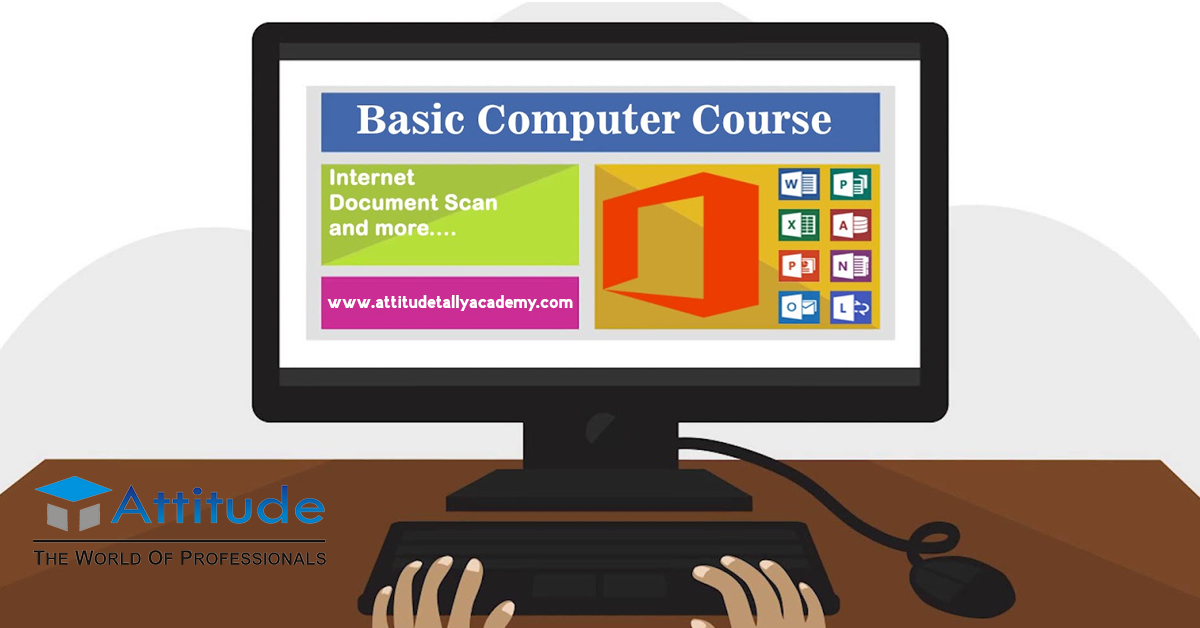Introduction
When learning about computers, two essential terms frequently appear—RAM and ROM. Both are types of memory, but they serve entirely different purposes. Understanding these differences is crucial, especially for students taking computer courses, as it helps in grasping the fundamentals of how computers store and access data.
What is RAM (Random Access Memory)?
RAM, or Random Access Memory, is a type of volatile memory that temporarily stores data and instructions that the CPU needs while running applications. It is a fast and temporary storage medium that helps speed up computer performance.
Key Features of RAM:
- Volatile Memory: Data is lost when the computer is turned off.
- High-Speed Performance: Enhances the system’s speed by quickly accessing frequently used data.
- Used for Running Applications: Essential for multitasking and smooth operation of software like MS Excel, web browsers, and games.
- Expandable: Most computers allow RAM upgrades for better performance.
Types of RAM:
- DRAM (Dynamic RAM) – Requires frequent refreshing to maintain data.
- SRAM (Static RAM) – Faster and more expensive than DRAM, used in cache memory.
What is ROM (Read-Only Memory)?
ROM, or Read-Only Memory, is a type of non-volatile memory that permanently stores critical data required for booting up the computer and performing essential tasks. Unlike RAM, data in ROM remains intact even when the system is powered off.
Key Features of ROM:
- Non-Volatile Memory: Data remains stored permanently.
- Pre-Programmed Data: Contains firmware that helps the computer start up.
- Read-Only Access: Data in ROM cannot be easily modified.
- Stable and Reliable: Used for storing essential programs like the BIOS.
Types of ROM:
- PROM (Programmable ROM) – Can be programmed once after manufacturing.
- EPROM (Erasable Programmable ROM) – Data can be erased using UV light.
- EEPROM (Electrically Erasable Programmable ROM) – Can be modified using electrical signals.
Major Differences Between RAM and ROM
| Feature | RAM | ROM |
| Data Storage | Temporary | Permanent |
| Volatility | Volatile (loses data when powered off) | Non-volatile (retains data) |
| Speed | Fast | Slower than RAM |
| Usage | Running applications and programs | Booting process and firmware storage |
| Modification | Easily modified | Difficult to modify |
Why Understanding RAM and ROM is Important for Students?
For students pursuing computer training, knowing the difference between RAM and ROM is essential. Many advanced courses, such as MS Excel Training in Yamuna Vihar or Basic Computer Training in Uttam Nagar, require an understanding of computer memory for effective learning. Whether you are working with Excel spreadsheets, designing graphics, or learning coding, RAM plays a key role in system performance, while ROM ensures your system boots up correctly.
Choosing the Right Training Institute
If you’re looking to build a strong foundation in computer knowledge, enrolling in a Computer Training Institute in Yamuna Vihar or Basic Computer Course in Uttam Nagar can be a great step. Learning about computer memory, hardware, and software applications will give you a competitive edge in today’s digital world.
By gaining expertise in Advanced Excel Training in Uttam Nagar or other essential computer courses, you can improve your skills and career opportunities. A well-structured training program can help you master tools like MS Office, Excel, and database management effectively.
Final Thoughts
Understanding the difference between RAM and ROM is fundamental for anyone entering the field of computers. RAM enhances performance by providing fast access to temporary data, while ROM ensures that essential system files are permanently stored for smooth operation. Whether you’re a student, a professional, or just starting out, knowing these concepts will help you navigate the tech world with confidence.
If you’re eager to learn more, consider enrolling in a Basic Computer Training Institute in Yamuna Vihar or Advanced MS Excel Training in Uttam Nagar to enhance your technical knowledge and improve your career prospects.




